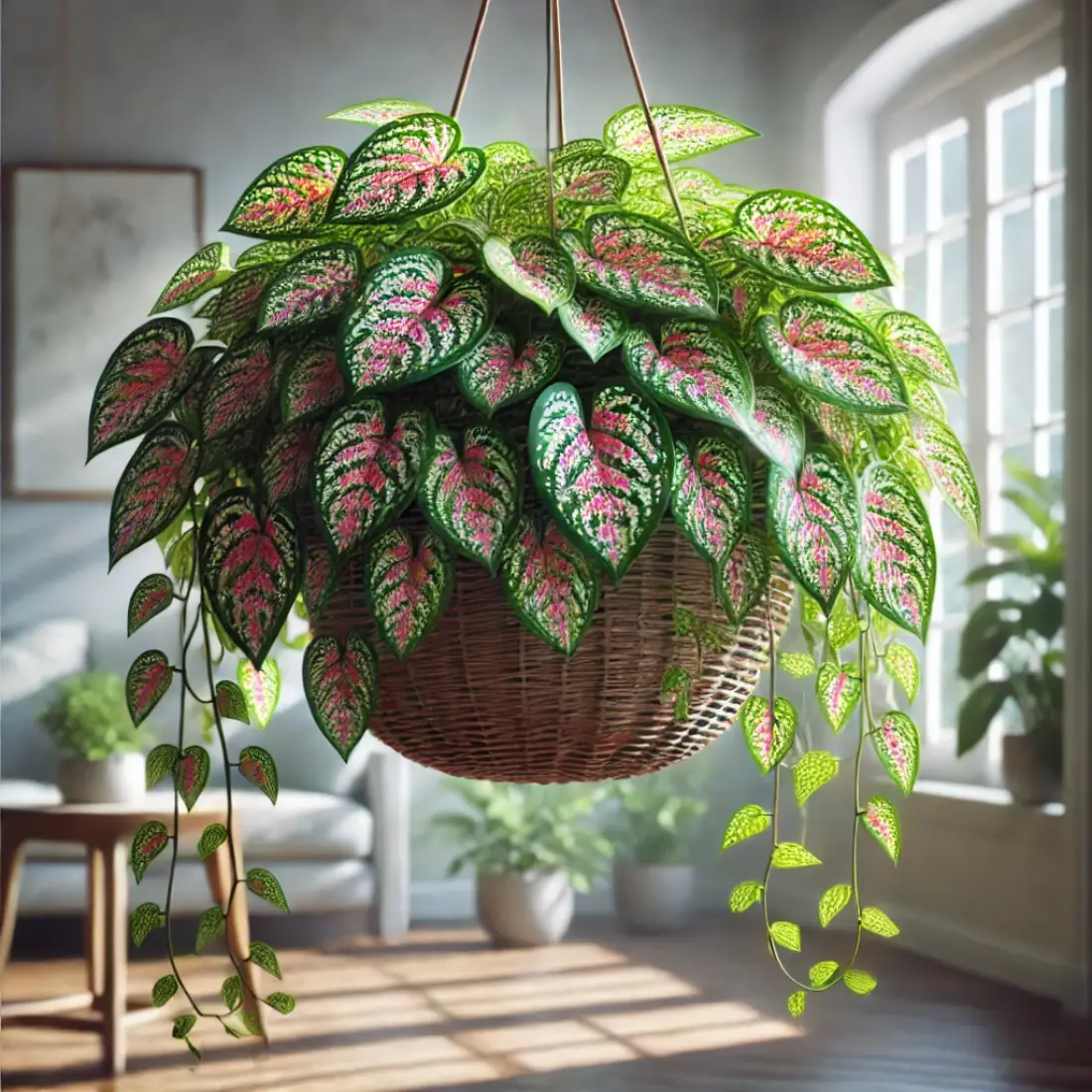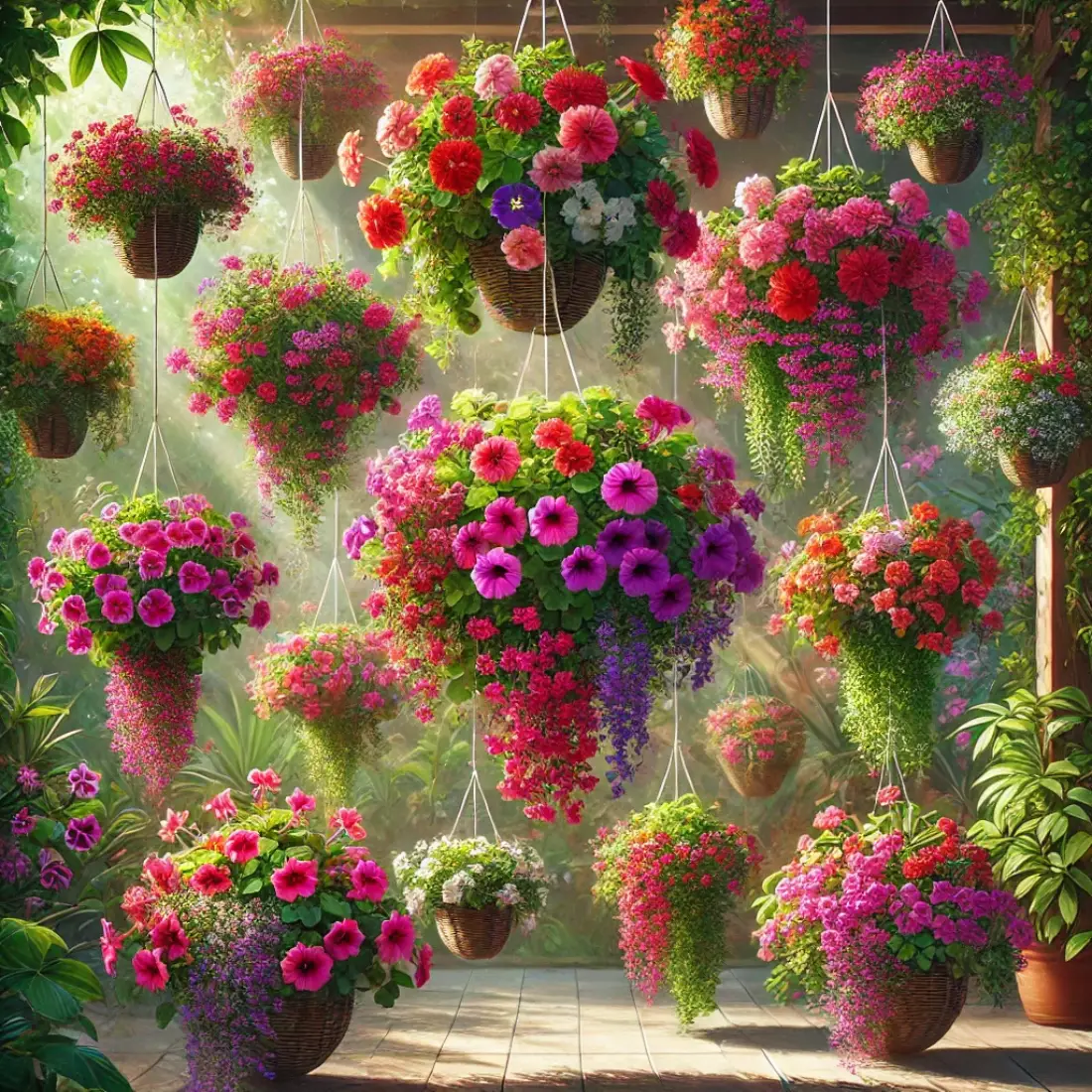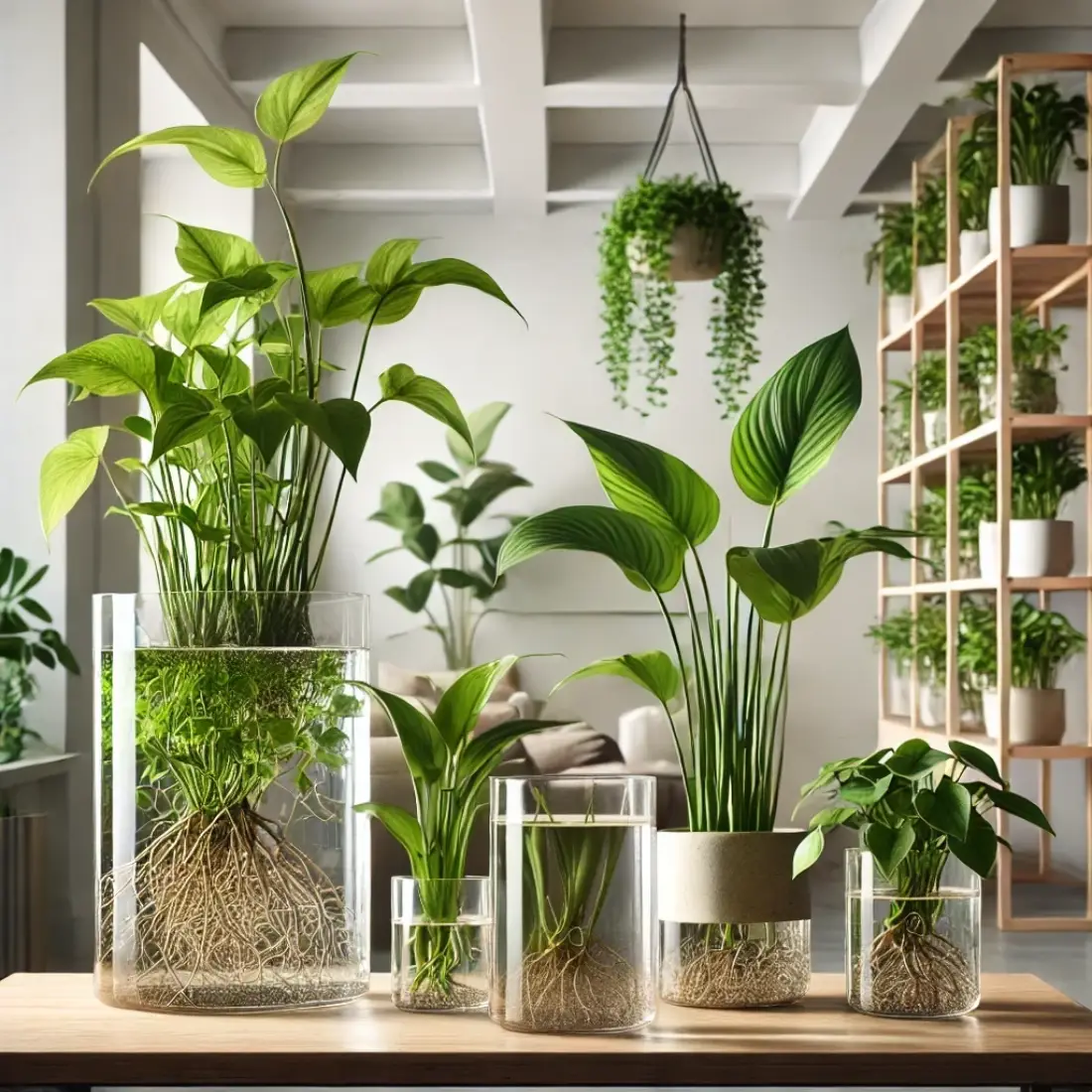The Polka Dot Plant (Hypoestes phyllostachya), also known as the Freckle Face Plant, is native to Madagascar. This tropical plant is renowned for its eye-catching foliage, characterized by brightly colored spots that stand out against a background of green leaves. The most common varieties showcase pink spots, but cultivars with white, red, and purple spots are also available.
Polka Dot Plants typically grow to a height of 12 to 18 inches, making them an excellent choice for both indoor and outdoor spaces. They are bushy, compact plants that thrive in a humid environment, reflecting their tropical origins. These plants are not just attractive but also versatile, suitable for various settings, from garden beds to decorative indoor pots.
Varieties and Hybrids
There are several varieties of the Polka Dot Plant, each with unique color patterns. Some popular ones include:
- ‘Splash’ Series: Known for its bright pink, red, and white splashes.
- ‘Confetti’ Series: Features finer, more delicate spotting.
- ‘Carmina’: Displays striking red spots on dark green leaves.
- ‘Pink Brocade’: One of the most popular, with vivid pink spots.
Optimal Growing Conditions
Choosing the Right Location
For optimal growth, the Polka Dot Plant requires a location that provides bright, indirect light. Direct sunlight can scorch its delicate leaves, while insufficient light can lead to leggy growth and dull colors. Indoors, placing the plant near an east or north-facing window is ideal. Outdoors, it thrives in partial shade, protected from harsh midday sun.
Temperature is also crucial, these tropical plants prefer a warm environment, ideally between 70°F and 80°F (21°C to 27°C). They are sensitive to cold and should be kept away from drafts or sudden temperature changes. If grown outdoors, they should be brought inside when temperatures drop below 60°F (15°C).
Soil Requirements
The Polka Dot Plant thrives in well-draining soil rich in organic matter. A standard potting mix with added perlite or sand to enhance drainage works well. The soil should retain moisture without becoming waterlogged, which can lead to root rot.
Maintaining slightly acidic to neutral pH levels (between 6.1 and 6.5) is ideal. Adding compost or a balanced, organic fertilizer can provide the necessary nutrients for robust growth. Ensure the pot or garden bed has good drainage to prevent water accumulation around the roots.
Watering Schedule
Proper watering is essential for the health of the Polka Dot Plant. It thrives in consistently moist soil but is prone to root rot if overwatered. Water the plant when the top inch of soil feels dry to the touch. During the growing season (spring and summer), this might mean watering every few days, depending on the humidity and temperature.
In the cooler months (fall and winter), reduce watering frequency as the plant’s growth slows. Always use room-temperature water to avoid shocking the roots. Watering from the bottom can help prevent water from sitting on the leaves, which can lead to fungal issues.
Organic Fertilizer for Polka Dot Plant
For the Polka Dot Plant, an organic fertilizer rich in essential nutrients promotes vibrant growth. Compost tea is an excellent choice, providing a balanced mix of nitrogen, phosphorus, and potassium.
You can make compost tea by steeping compost in water for 24-48 hours and then using the liquid to water the plant. Fish emulsion, a natural fertilizer made from fish waste, is another great option, offering a quick nutrient boost.
Worm castings can also be mixed into the soil to improve fertility. These organic fertilizers support healthy foliage and vibrant color without the risk of chemical buildup.
Pruning and Maintenance
Pruning Techniques
Pruning is essential for maintaining the health and appearance of your Polka Dot Plant. Regular pruning encourages bushier growth and prevents the plant from becoming leggy. To prune, use clean, sharp scissors or pruning shears to trim back any overgrown or straggly stems. Aim to prune just above a leaf node, as this will promote new growth from that point.
It’s best to prune in the spring and summer when the plant is actively growing. Remove any dead or yellowing leaves to keep the plant looking fresh. Pinching back the tips of the stems can also help maintain a compact shape. This involves simply using your fingers to nip off the growing tips of the stems, which encourages branching and fuller growth.
Pruning not only improves the plant’s appearance but also increases airflow around the leaves, reducing the risk of fungal diseases. Regularly inspecting and pruning your Polka Dot Plant ensures it remains healthy and vibrant.
Repotting Polka Dot Plant
Repotting your Polka Dot Plant is necessary every 1-2 years to accommodate its growth and refresh the soil. The best time to repot is in the spring, just before the growing season begins. Choose a pot that is one size larger than the current one, with drainage holes to prevent waterlogging.
Gently remove the plant from its current pot, taking care not to damage the roots. Shake off any old soil and trim away any dead or excessively long roots. Place the plant in the new pot, fill with fresh potting mix, and water thoroughly.
After repotting, place the plant in a location with bright, indirect light and maintain regular watering. Repotting helps ensure the plant has enough space to grow and access to fresh nutrients, promoting overall health and vigor.
Managing Pests and Diseases
Common Pests
Polka Dot Plants are prone to pests like aphids, spider mites, and mealybugs. Aphids cluster under leaves, spider mites create webs and cause stippling, while mealybugs appear as white, cotton-like spots.
Regular inspection is crucial. For treatment, use organic solutions such as neem oil or insecticidal soap, ensuring thorough coverage. Alternatively, introduce beneficial insects like ladybugs. Regularly wipe the leaves with a damp cloth to keep them clean and pest-free.
Disease Prevention
Common diseases for Polka Dot Plants include root rot and powdery mildew. Prevent root rot by using well-draining soil and pots with drainage holes, watering only when the top inch of soil is dry.
Powdery mildew, a white powder on leaves, thrives in high humidity and poor airflow. Ensure good air circulation, avoid overcrowding, and maintain moderate humidity levels.To treat powdery mildew on Polka Dot Plants, use a mixture of baking soda and water (1 tablespoon baking soda in 1 gallon of water).
Add a few drops of liquid soap. Spray the affected leaves thoroughly, ensuring complete coverage. Repeat every 7-10 days until the mildew is gone. Regular inspections and proper care practices help prevent and manage these issues, ensuring plant health.
Troubleshooting Common Problems
Yellowing Leaves
Yellowing leaves on a Polka Dot Plant often indicate issues with watering or light. Overwatering is a common cause, leading to root rot. Ensure the soil drains well and water only when the top inch is dry. On the other hand, underwatering can also cause leaves to yellow; maintain consistent moisture.
Improper lighting can be another culprit. Too much direct sunlight can scorch the leaves, while insufficient light can cause yellowing and leggy growth. Place the plant in bright, indirect light and adjust its position as needed.
Nutrient deficiencies might also cause yellowing. Feeding the plant with a balanced, water-soluble fertilizer once a month during the growing season can help. Ensure the plant isn’t exposed to drafts or sudden temperature changes, as stress can also cause yellowing leaves.
Fading Colors
Fading colors in a Polka Dot Plant often result from inadequate light. These plants need bright, indirect light to maintain their vibrant spots. If the colors fade, try moving the plant to a brighter location, avoiding direct sunlight.
Nutrient deficiencies can also lead to color loss. Using a balanced fertilizer can help restore vibrancy. Ensure the soil pH is slightly acidic to neutral (6.1-6.5) for optimal nutrient uptake.
Overwatering or underwatering can stress the plant and affect its colors. Maintain a consistent watering schedule, keeping the soil moist but not soggy. Proper humidity levels (around 50%) are also essential, use a humidifier or a pebble tray with water to increase humidity if needed.
FAQs about Polka Dot Plant
Why are my Polka Dot Plant’s leaves drooping?
Drooping leaves can be caused by underwatering, overwatering, or low humidity. Ensure the soil is consistently moist but not waterlogged and increase humidity if necessary.
How can I make my Polka Dot Plant bushier?
Prune regularly by pinching back the tips of the stems. This encourages branching and results in a bushier plant.
Is the Polka Dot Plant toxic to pets?
Yes, the Polka Dot Plant is mildly toxic to pets if ingested. It can cause digestive discomfort, so keep it out of reach of curious pets.
Why are the colors on my Polka Dot Plant fading?
Fading colors are often due to insufficient light. Move your plant to a spot with bright, indirect light and ensure it receives adequate nutrients through regular fertilization.
How often should I water my Polka Dot Plant?
Water when the top inch of soil feels dry. Typically, this means watering every few days during the growing season and less frequently during the cooler months.
Can I grow Polka Dot Plant outdoors?
Yes, Polka Dot Plants can be grown outdoors in partial shade. Ensure they are protected from direct midday sun and bring them indoors if temperatures drop below 60°F (15°C).
What type of soil is best for Polka Dot Plants?
Use a well-draining potting mix with added perlite or sand. This helps prevent waterlogging and ensures the roots have access to oxygen.
How do I treat aphids on my Polka Dot Plant?
Use an organic insecticidal soap or neem oil to treat aphids. Apply thoroughly to all affected areas and repeat as necessary.
Why are the edges of my Polka Dot Plant’s leaves turning brown?
Brown leaf edges can be caused by low humidity or underwatering. Increase humidity levels around the plant and ensure it is watered consistently.
When should I repot my Polka Dot Plant?
Repot your Polka Dot Plant every 1-2 years or when you notice roots growing out of the drainage holes. Spring is the best time for repotting.












